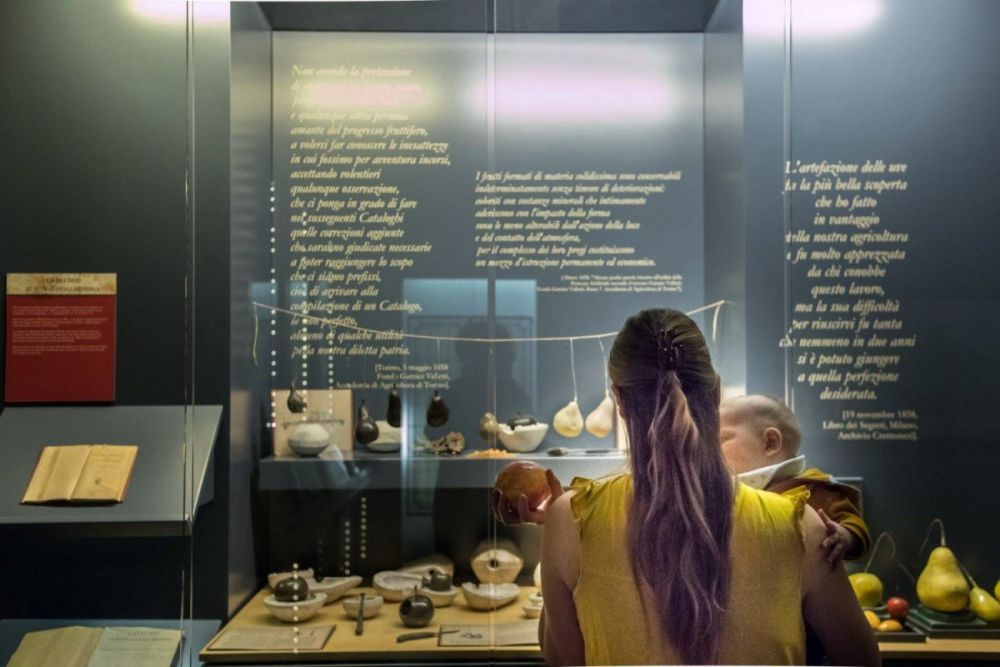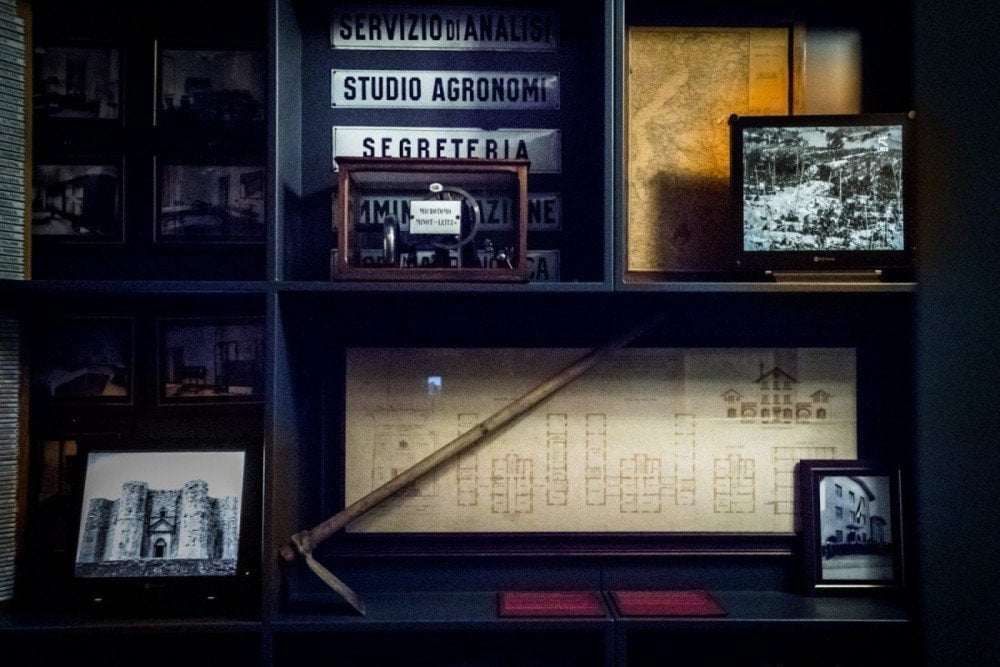Turin’s Fruit Museum is an extraordinary place with a vast collection of fake fruit created for scientific reasons. The museum offers a fascinating journey through the agronomy of the 19th century, thanks to Francesco Garnier Valletti’s extraordinary fruit collection. This museum will amaze you with hundreds of unique fake fruits meticulously displayed in antique solid wood showcases.
Table of Contents
Exploring the Turin Fruit Museum: the exhibits
In the 19th century, papier-mâché or wax models were essential for scientific research. Pomology, the science which dealt with the classification of fruit varieties, needed apple and pear models. The ones made by Francesco Garnier Valletti are so lifelike that they look like real fruit even centuries later.
PLAN YOUR TRIP TO TURIN
Purchase the Torino + Piemonte Card online to enjoy free public transportation in Turin, as well as access to museums, castles, fortresses, and royal residences in Turin and the Piedmont region.
While travelling in Italy, you can stay connected with family and friends using the Holafly eSIM, which offers unlimited data at 3G, 4G, and LTE speeds. Additionally, be sure to get Heymondo travel insurance for a worry-free adventure.
A visit to this museum can provoke different reactions. On the one hand, you can be amazed by the cataloguing obsession of 19th-century scientists and by the hundreds of fake fruits showcased. On the other, you may find all this pretty dull.
Francesco Garnier Valetti’s fruit models
The Fruit Museum hosts hundreds of fruits, including apples, pears, and cherries, all neatly arranged on old wooden shelves. The exhibition is occasionally interrupted by some plaster vegetables from the 1920s, not the work of Francesco Garnier Valletti.
The models created by Francesco Garnier Valletti are truly unique for their exceptional level of detail and the possibility of mass production. Both characteristics were challenging to achieve with the techniques of the time. Francesco Garnier Valletti distinguished himself by the precision with which he reproduced every detail of the fruit, including spots and hairs.
Francesco Garnier Valletti’s creation process was extremely artisanal. He would start by making a mould from a cast of the original fruit. Then, fill it with a mixture he had devised, a secret recipe that disappeared with his death. He would then smooth and paint the fruit to reproduce its skin faithfully.
The attention to detail was so great that Francesco Garnier Valletti used shredded wool to fluff the peach and apricot skin. The models on display appear so realistic that it is tough to recognise some of the apples and pears on display as fake, despite the passage of time.

Fruit Museum: agricultural science and biodiversity
The Fruit Museum offers much more than just a collection of wax models. Before admiring the wax fruits, you can explore the Royal Agricultural Chemistry Station, Regia Stazione di Chimica Agraria, rooms. This section houses a reconstruction of the laboratories, a library and the director’s office and highlights essential reflections on biodiversity.
Inside the rooms dedicated to fruit, you will be astounded by the extraordinary variety of apples and pears, exceeding six hundred types. This biodiversity was common in the late 19th century but has become extremely rare. When shopping, you usually only find five or six varieties. In the past, there were apples for every taste and every season.
The reflections proposed by the Francesco Garnier Valletti Fruit Museum on the relationship between science and agriculture remain as relevant today as ever. Topics such as the production, biodiversity and consumption of agricultural products are not limited to the 19th century but still need to be discussed.

Francesco Garnier Valletti: an adventurous life between fruit and imperial courts
Francesco Garnier Valletti was a master in the field of artificial fruit creation. Even his preparatory sketches are true works of art. Before creating the moulds, he would draw each fruit in detail, colouring it in watercolour to highlight every nuance of the skin.
His career started as a confectioner in Giaveno, a village in the province of Turin. After his marriage, Francesco Garnier Valletti moved to Turin to produce wax flower models, but in 1840, he relocated to Milan. Then, because of his skill, he moved again to the imperial court in Vienna, where he specialised in wax fruits. Later, he also went to the court of the Russian Tsar in St Petersburg.
He later returned to Turin to look after his four children due to the death of his wife. From then on, he devoted himself exclusively to artificial pomology, which had become his main activity.
Although living permanently in Turin, Francesco Garnier Valletti participated in person or sent essays to countless exhibitions in Italy and abroad, including the United States and Australia. For his unique fake fruits, he won innumerable prizes and awards. Unfortunately, the recognition he received was never matched by adequate remuneration, but he continued to perfect his technique throughout his life.
Practical information for visiting the Fruit Museum in Turin
The Fruit Museum is located in Turin, near the Valentino Park. The same building houses the other 19th-century university museums. You can buy a bundle ticket to visit it with the Lombroso Museum and the Museum of Human Anatomy. Consider half a day for your visits, but remember that the Museum of Human Anatomy entrance is on the opposite side of the building.
The Fruit Museum can be easily reached by bus, metro and on foot. Check the best route from your hotel or wherever you are during your visit to Turin on Google Maps. If you prefer to move around by car, you need to know that there is very little space in the area and you need to pay for parking. The most convenient car park is in the Torino Esposizioni area, opposite Valentino Park.
Museo della Frutta Francesco Garnier Valletti
Via Pietro Giuria, 15
10125 Torino
Where to sleep in Turin
In Turin you can sleep either in elegant hotels located in historical buildings or in modern flats with all comforts, the choice depends only on your taste. Since I live in Turin I can recommend the best hotels, which are the Best Western Plus Executive Hotel and Suites and the luxurious Hotel Principi di Piemonte, both in the city centre. If you are looking for a cheaper option, in modern hostels that also have private rooms, then Combo or CX Belfiore are for you, both located in vibrant neighbourhoods full of restaurants and nightlife.
In my opinion, the Fruit Museum, although little known, is one of the most original museums in Turin. Comment if you already know this curious Turin museum and Francesco Garnier Valletti’s story. In my opinion, he was a true artist of his time!
